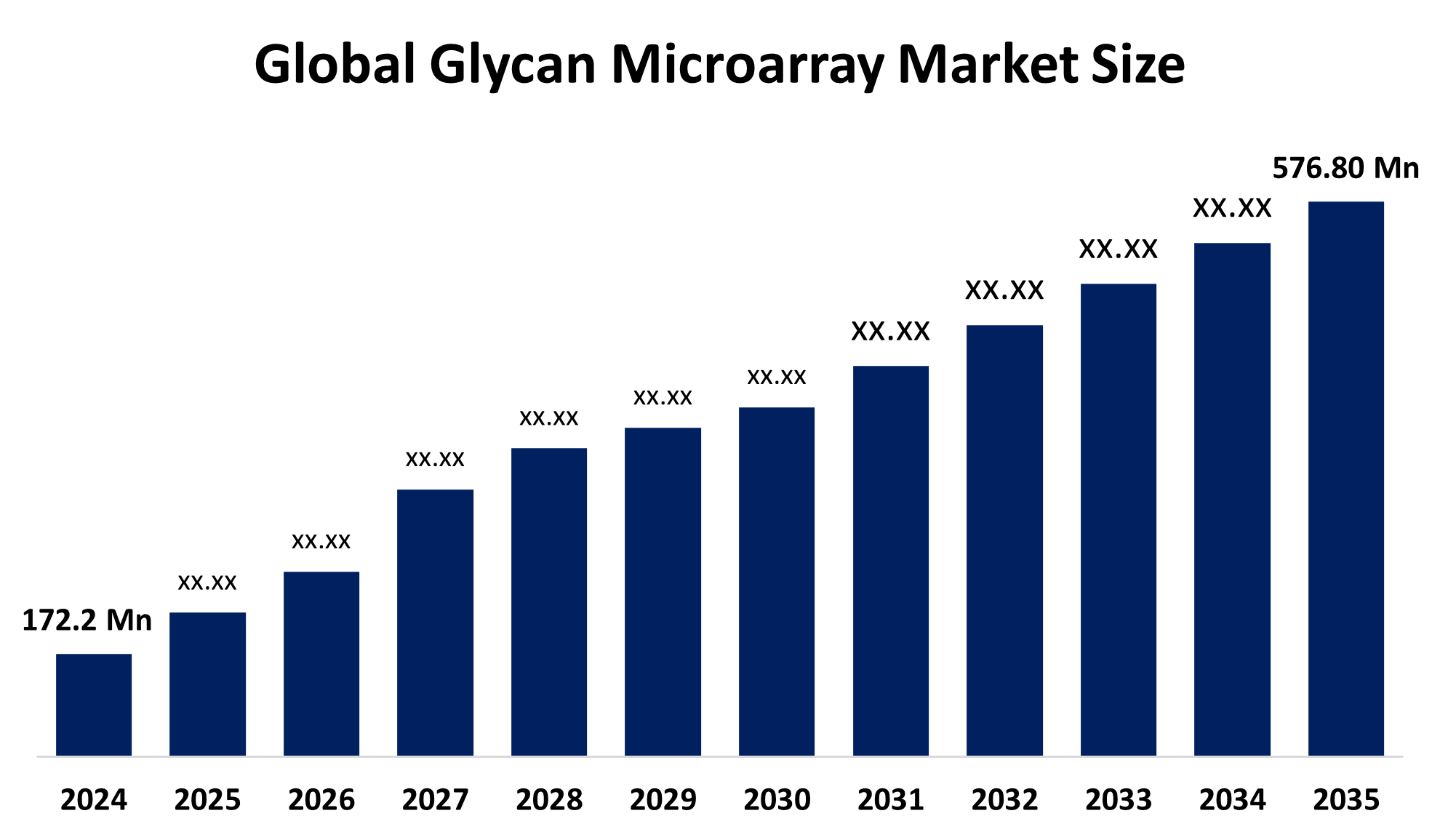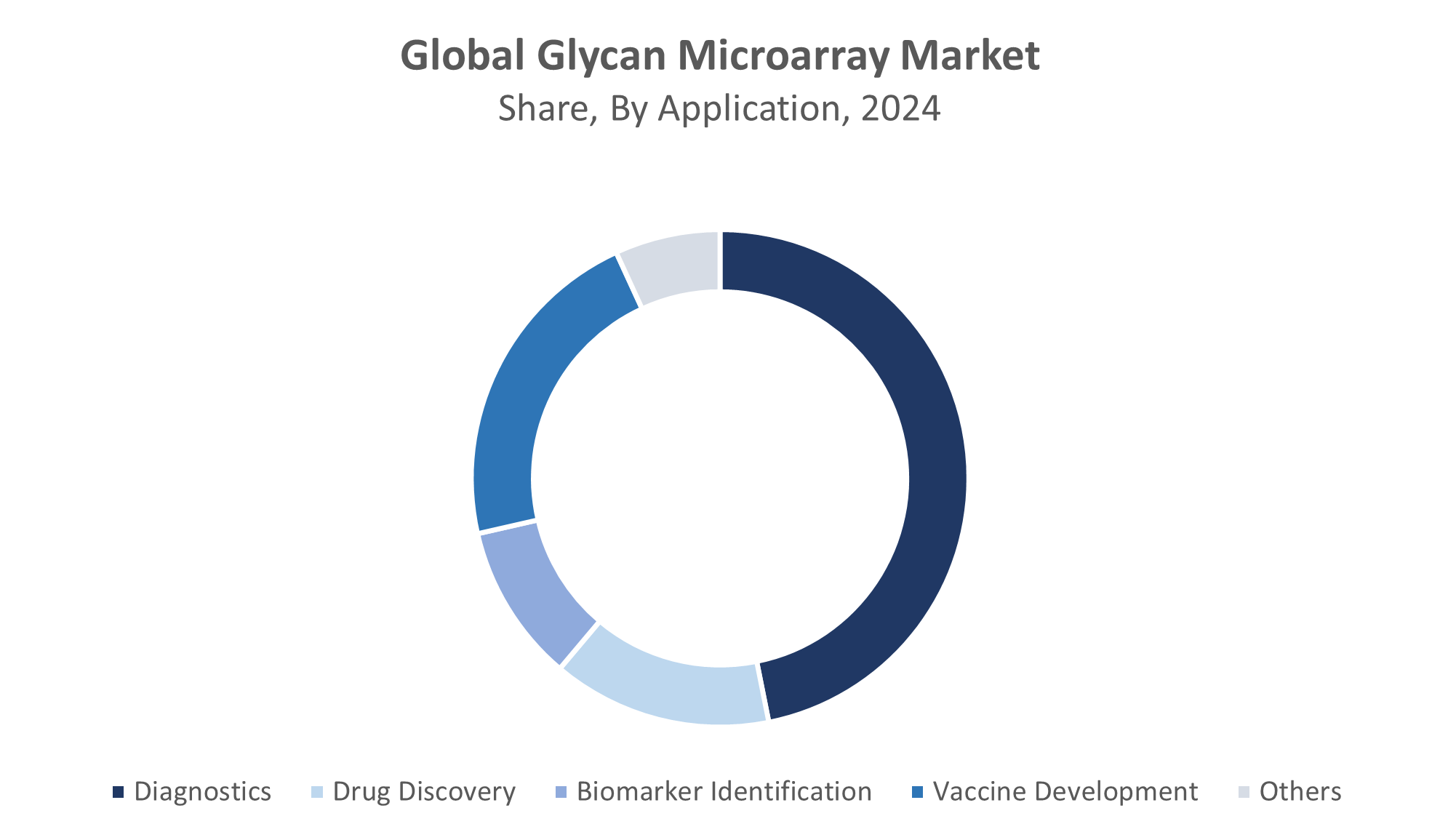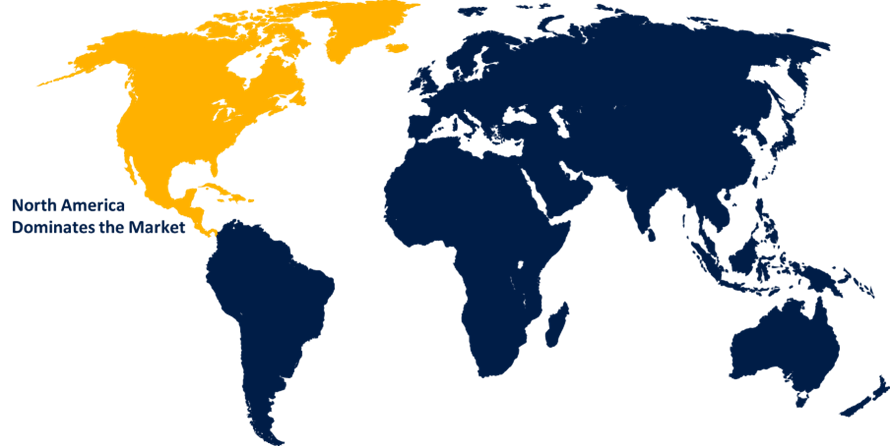Global Glycan Microarray Market Size, Share, and COVID-19 Impact Analysis, Russia-Ukraine War Impact, Tariff Analysis, By Product Type (Instrument, Consumables, Software, and Services), By Application (Diagnostics, Drug Discovery, Biomarker Identification, Vaccine Development, and Others), and By Region (North America, Europe, Asia-Pacific, Latin America, Middle East, and Africa), Analysis and Forecast 2025 - 2035.
Industry: HealthcareGlycan Microarray Market Summary, Size & Emerging Trends
According to Spherical Insights, The Global Glycan Microarray Market Size is Expected To Grow From USD 172.2 Million in 2024 to USD 576.80 Million by 2035, at a CAGR of 11.62% during the Forecast Period 2025-2035. The Glycan Microarray Market is fueled by developments in glycomics, rising R&D expenditures, and the expanding need for precision healthcare solutions. It offers opportunities in biomarker discovery, disease diagnostics, customized medicine, and drug development.

Get more details on this report -
Key Market Insights
- North America is expected to account for the largest share in the glycan microarray market during the forecast period.
- In terms of product type, the instrument segment is projected to lead the glycan microarray market in terms of equipment throughout the forecast period
- In terms of application, the diagnostics segment captured the largest portion of the market
Global Market Forecast and Revenue Outlook
- 2024 Market Size: USD 172.2 Million
- 2035 Projected Market Size: USD 576.80 Million
- CAGR (2025-2035): 11.62%
- North America: Largest market in 2024
- Asia Pacific: Fastest growing market
Glycan Microarray Market
The global industry devoted to the creation, manufacturing, and marketing of glycan microarray technology for the analysis of glycan-protein interactions is known as the "glycan microarray market." High-throughput screening for glycan-binding proteins, antibodies, pathogens, and cells is made possible by glycan microarrays, which are analytical instruments made up of various carbohydrate molecules fixed on a solid surface. This method is essential to glycomics, immunology, and biomedical research due to its provide important information on immunological responses, disease processes, and the identification of biomarkers. The uses in the glycan microarray market are diverse and include research on infectious diseases, cancer diagnosis, vaccine creation, and drug development. The growing need for sophisticated diagnostic instruments that can offer thorough insights into intricate biological processes is one of the main factors driving the glycan microarray market. The use of glycan microarrays in research and clinical settings is being driven by the growing need for accurate and quick diagnostic platforms due to the rising prevalence of infectious, autoimmune, and cancerous disorders worldwide.
Glycan Microarray Market Trends
- Growing Adoption in Precision Medicine: Glycan microarrays are being used more often to find disease-specific biomarkers, which helps to enhance targeted therapies and tailored diagnostics.
- Technological Developments: The sensitivity, specificity, and scalability of glycan microarray systems are being improved by continuous advancements in array production, detection techniques, and data analysis.
- Growing Interest in Glycomics Research: As interest in glycomics research grows, there is a growing need for high-throughput instruments such as glycan microarrays to investigate intricate biological processes mediated by glycans.
- Cooperation and Strategic Partnerships: Research and commercial uses of glycan microarray technologies are being expedited by increased cooperation among academic institutions, biotechnology corporations, and pharmaceutical companies.
Glycan Microarray Market Dynamics
Global Glycan Microarray Market Report Coverage
| Report Coverage | Details |
|---|---|
| Base Year: | 2024 |
| Market Size in 2024: | USD 172.2 Million |
| Forecast Period: | 2025-2035 |
| Forecast Period CAGR 2025-2035 : | 11.62% |
| 2035 Value Projection: | USD 576.80 Million |
| Historical Data for: | 2020-2023 |
| No. of Pages: | 240 |
| Tables, Charts & Figures: | 110 |
| Segments covered: | By Product Type, By Application, By Regional Analysis |
| Companies covered:: | RayBiotech, Z Biotech, Sengenics, Lectenz Bio, GlycoTechnica, Creative Biolabs, Roche Diagnostics, Bruker Corporation, Sumitomo Bakelite, Oxford GlycoSciences, Arrayit Corporation, Agilent Technologies, Thermo Fisher Scientific, Shimadzu Corporation, Others |
| Pitfalls & Challenges: | COVID-19 Impact, Challenges, Future, Growth, & Analysis |
Get more details on this report -
Driving Factors: Rising demand for precision healthcare drives growth.
The increasing focus on precision healthcare and tailored treatment is another important element driving market growth. Glycan microarray technologies are also becoming more widely used and commercialized due to favorable regulatory frameworks and increased government and private sector involvement in glycomics research. Improvements in bioanalytical methods, growing funding for life sciences research, and the growing need for personalized medicine are the main factors propelling this market's expansion. The development of innovative glycan-based diagnostic and therapeutic solutions is being supported by the growing cooperation between academic institutions and industrial participants, which is fueling market expansion even further.
Restrain Factors: High costs and complexity hinder widespread adoption.
A number of problems, such as the high cost of equipment and intricate production procedures, restrict the broad implementation of glycan microarrays. Furthermore, the integration of glycomics into mainstream applications is hampered by researchers' and doctors' lack of knowledge and proficiency in the field. The absence of established methods and technical difficulties in glycan synthesis and data interpretation further impede market expansion, especially in poor nations with weak research infrastructure.
Opportunity: Strong growth in diagnostics and personalized medicine.
The glycan microarray market has a lot of opportunity to grow, especially in the fields of precision diagnostics and personalized medicine. The desire for sophisticated analytical tools that can provide high-resolution glycan profiles is being driven by the growing understanding of the role that glycans play in disease ethology and treatment response. The extension of glycan microarray applications outside of conventional biomedical research is another significant opportunity. Additionally, partnerships between academic institutions and business leaders are stimulating innovation and opening up new research and commercial application opportunities.
Challenges: Technical glycan synthesis challenges impact array reliability.
The technical difficulty of glycan synthesis and immobilization is one of the challenges facing the glycan microarray market, which can have an impact on array consistency and dependability. Accessibility is restricted by high production and analysis costs, especially in environments with limited resources. Effective use and scalability are further hampered by the requirement for sophisticated bioinformatics tools to analyze complicated data.
Global Glycan Microarray Market Ecosystem Analysis
The network of biotechnology businesses, university research institutes, diagnostic labs, and pharmaceutical companies involved in the development, manufacturing, and use of glycan microarray technologies makes up the global glycan microarray market ecosystem. High-throughput investigation of glycan interactions is made possible by developments in glycomics, bioinformatics, and analytical techniques. The market environment is also influenced by financing organizations, regulatory authorities, and strategic partnerships. The ecosystem is fueled by innovation, research expenditures, and the rising need for focused therapies and precision diagnostics in a variety of clinical and scientific fields.
Global Glycan Microarray Market, By Product Type
What segment led the glycan microarray market in terms of revenue?
The instrument segment led the glycan microarray market, generating the largest revenue share. Instruments, which include advanced array printers, scanners, and detecting systems that allow for high-throughput and high-resolution investigation of glycan interactions, are the foundation of glycan microarray operations. Laboratory productivity and data accuracy are being greatly improved by the ongoing development of instrument technology, which includes the introduction of automated platforms and smaller devices.
The services segment in the glycan microarray market is expected to grow at the fastest CAGR over the forecast period. A major factor in the services segment's consistent growth is the growing demand for outsourced services, especially from small and medium-sized businesses with little internal capacity. The market for glycan microarrays depends heavily on services including data analysis, training, technical support, and the creation of specialized assays.
Global Glycan Microarray Market, By Application
Why is the diagnostics segment dominant in the glycan microarray market?
The diagnostics segment held the largest market share in the glycan microarray market. The diagnostics portion provides unmatched sensitivity and specificity in identifying glycan profiles linked to illness. Glycan microarrays are becoming the go-to platform for next-generation diagnostics due to their capacity to produce thorough glycan profiles and assess several indicators at once.

Get more details on this report -
The vaccine development segment in the glycan microarray market is projected to register the fastest CAGR. Glycan microarrays have a new and promising use in the development of vaccines. The method is being used to assess the effectiveness of vaccines, map immune responses, and find protective glycan epitopes.
North America is expected to account for the largest share of the glycan microarray market during the forecast period.

Get more details on this report -
The supremacy of the North American region is ascribed to the existence of top-notch research institutes, a strong healthcare system, and large expenditures in the development of life sciences. A robust growth trajectory is anticipated for the region, bolstered by favorable legislative frameworks and continuous technology advancements.
The United States is experiencing steady growth in the glycan microarray market. Glycomics research is particularly active in the United States, where a large number of academic, clinical, and commercial organizations are promoting advancements in glycan analysis and use.
Asia Pacific is expected to grow at the fastest CAGR in the glycan microarray market during the forecast period. Increased government support for research and development, growing biotechnology sectors, and growing healthcare investments are driving the region's growth. Glycomics research is advancing significantly in nations like China, Japan, and South Korea, aided by expanding partnerships with global academic institutions and business leaders.
China is the largest market for Glycan Microarray. China is creating a strong demand for improved diagnostic technologies because of its large investments in biotechnology research, growing healthcare infrastructure, and growing emphasis on precision medicine and glycomics.
Competitive Analysis:
The report offers the appropriate analysis of the key organizations/companies involved within the glycan microarray market, along with a comparative evaluation primarily based on their type of offering, business overviews, geographic presence, enterprise strategies, segment market share, and SWOT analysis. The report also provides an elaborate analysis focusing on the current news and developments of the companies, which includes product development, innovations, joint ventures, partnerships, mergers & acquisitions, strategic alliances, and others. This allows for the evaluation of the overall competition within the market.
WORLDWIDE TOP KEY PLAYERS IN THE GLYCAN MICROARRAY MARKET INCLUDE
- RayBiotech
- Z Biotech
- Sengenics
- Lectenz Bio
- GlycoTechnica
- Creative Biolabs
- Roche Diagnostics
- Bruker Corporation
- Sumitomo Bakelite
- Oxford GlycoSciences
- Arrayit Corporation
- Agilent Technologies
- Thermo Fisher Scientific
- Shimadzu Corporation
- Others
Key Target Audience
- Market Players
- Investors
- End-users
- Government Authorities
- Consulting And Research Firm
- Venture capitalists
- Value-Added Resellers (VARs)
Market Segment
This study forecasts revenue at global, regional, and country levels from 2020 to 2035. Spherical Insights has segmented the glycan microarray market based on the below-mentioned segments:
Global Glycan Microarray Market, By Product Type
- Instrument
- Consumables
- Software
- Services
Global Glycan Microarray Market, By Application
- Diagnostics
- Drug Discovery
- Biomarker Identification
- Vaccine Development
- Others
Global Glycan Microarray Market, By Regional Analysis
- North America
- US
- Canada
- Mexico
- Europe
- Germany
- UK
- France
- Italy
- Spain
- Russia
- Rest of Europe
- Asia Pacific
- China
- Japan
- India
- South Korea
- Australia
- Rest of Asia Pacific
- South America
- Brazil
- Argentina
- Rest of South America
- Middle East & Africa
- UAE
- Saudi Arabia
- Qatar
- South Africa
- Rest of the Middle East & Africa
Frequently Asked Questions (FAQ)
-
1. What is the CAGR of the glycan microarray market over the forecast period?The global glycan microarray market is projected to expand at a CAGR of 11.62% during the forecast period.
-
2. What is the market size of the glycan microarray market?The global glycan microarray market Size is expected to grow from USD 172.2 million in 2024 to USD 576.80 million by 2035, at a CAGR of 11.62% during the forecast period 2025-2035.
-
3. Which region holds the largest share of the glycan microarray market?North America is anticipated to hold the largest share of the glycan microarray market over the predicted timeframe.
-
4. Who are the top 10 companies operating in the global glycan microarray market?Key players include in RayBiotech, Z Biotech, Sengenics, Lectenz Bio, GlycoTechnica, Creative Biolabs, Roche Diagnostics, Bruker Corporation, Sumitomo Bakelite, Oxford GlycoSciences, Arrayit Corporation, Agilent Technologies, Thermo Fisher Scientific, Shimadzu Corporation, and Others.
-
5. What factors are driving the growth of the glycan microarray market?Developments in glycomics research, growing need for precision medicine, rising biotechnology investments, and growing applications in drug development and illness diagnostics are some of the major drivers driving the growth of the Glycan Microarray market.
-
6. What are the main challenges restricting wider adoption of the glycan microarray market?Lack of knowledge among researchers, high costs, technical difficulties in glycan synthesis, limited standardization, and the requirement for sophisticated bioinformatics tools for data interpretation are the primary challenges preventing the market use of glycosyl microarrays.
Need help to buy this report?